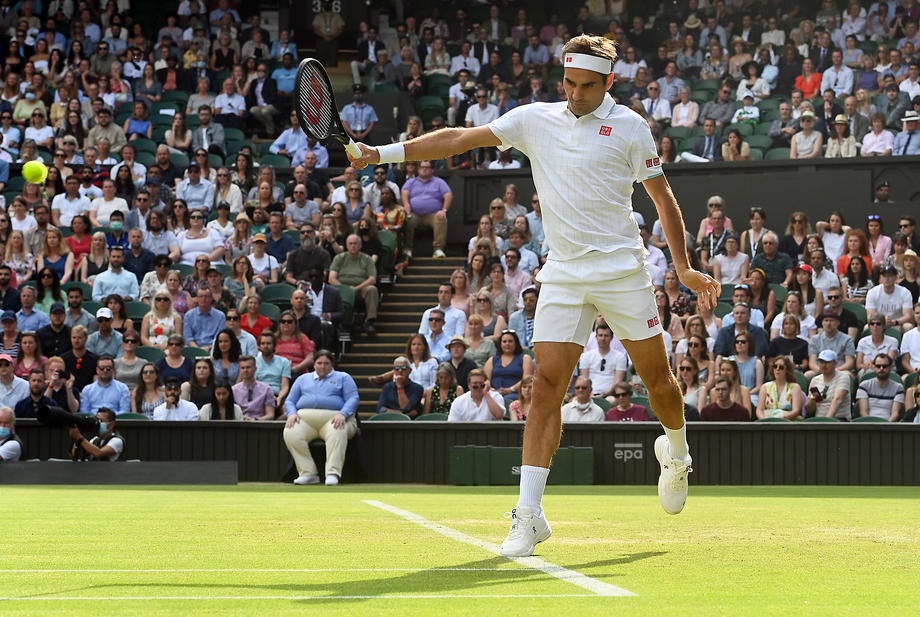- Carlos Costa’s Collection from 22 Years Traveling with Rafa Nadal
- Tournament Director Richard Krajicek Announces Tallon Griekspoor and Botic Van de Zandschulp to ABN AMRO Open Field
- Roger Federer Writes Poignant Tribute to Rafa Nadal
- Tennis Channel to Televise Rafael Nadal’s Davis Cup Farewell
- ATP Finals Final Draw: Jannik Sinner Makes History in Turin
- Stringlet: Serving Up Tennis Inspiration With A Twist
- ATP Finals Draws and Schedule for Sunday, November 17, 2024
- Fritz upsets Zverev in semis of Nitto ATP Finals
- ATP Finals Draws and Schedule for Saturday, November 16, 2024
- Novak Djokovic’s Net Split
- Nick Kyrgios Commits to Brisbane Comeback
- Frances Tiafoe Fined $120,000 for Cursing Out Chair Umpire
- Slovakia Stuns USA in Billie Jean King Cup Upset
- Andy Murray To Take Centre Stage with UK Theatre Tour Next Summer
- ATP Finals Draws and Schedule for Friday, November 15, 2024
From the Archives: Gene Scott—Tennis Super Hero—Best Friend And Lifetime Mentor @10sBalls
- Updated: September 26, 2024

As truth teller, tournament director, world champion and respected tennis voice, Eugene L. Scott served many roles and had a staggering impact on Open Era tennis.
In celebration of the tennis icon’s approaching birthday, 10sBalls.com looks back on the Tennis Week publisher’s brilliant and impactful career.
Called the “conscience of tennis” by Tennis Magazine and a “tennis Renaissance man” by those in the sport, Gene Scott was a visionary who touched tennis at virtually every level for more than 40 years until his passing at age 68 from Amyloidosis, a rare protein blood disorder, on March 20th, 2006 at the Mayo Clinic in Rochester, Minnesota. Scott was inducted into the International Tennis Hall of Fame in 2008.
As a player, publisher, agent, administrator, tournament director, who ran the ATP’s season-ending Masters at Madison Square Garden and created the Kremlin Cup that helped spark the “Russian Revolution”, Scott’s unique perspective empowered him to see issues from all angles—a “Vantage Point ” he occupied alone.
Relying on a strong serve-and-volley game, Scott reached a career-high world ranking of No. 11 in 1965 and was ranked inside the United States’ Top 10 five times. He advanced to the French quarterfinals in 1964 and the U.S. National Championships semifinals (now the U.S. Open) in 1967 and faced Rod Laver on Centre Court at Wimbledon. He was undefeated in Davis Cup competition and won more than 40 senior championships.
The New York native’s passion for tennis was apparent in his life-long devotion to the sport. He played tennis with world leaders ranging from former United States President and fellow Yale alumni George H.W. Bush and former Russian President Boris Yeltsin on some of the most prestigious courts in the world and was equally enthusiastic partnering wife Polly at annual mixed doubles events at Manursing Island Club in Rye, N.Y. along with their kids, Lucy and Sam.
An outstanding all-around athlete at Yale, Scott excelled in several sports, competing on the tennis, ice hockey, soccer, lacrosse and track teams at New Haven. He earned three letters in tennis, often playing singles then dashing over to the track to compete in the high jump before returning to the court to play doubles, three in hockey, two in soccer and one in lacrosse before graduating with a Bachelor’s degree in history in 1960. He earned his law degree from the Virginia School of Law in 1965.
Topspin author and player Eliot Berry grew up playing the same Eastern circuit as Scott, recalling his supreme athleticism made him stand out “like a God.” Tennis Week contributing writer Dan Weil, who once tried to buy partial ownership of the magazine, called Scott “an Ivy League-WASP version of Jim Thorpe.”
During his tenure as a Wall Street attorney, he took time off from work in the summer of 1967 to take the daily subway ride from Manhattan to Forest Hills, former home of the U.S. Open. Competing as a part-time player and a full-time lawyer, the 29-year-old Scott, wielding the then-experimental steel Wilson T-2000 frame that would be popularized by Jimmy Connors a few years later, advanced to the semifinals before bowing to John Newcombe, who would go on to win the tournament.

Despite undergoing double hip replacement surgery in his 50s, Scott was still among the best players in the world in his age group right up until the end of his life. He captured the USTA Men’s 65 Grass Court Championships in September of 2004 in Philadelphia then went on to claim the International Tennis Federation’s Men’s Super-Seniors World Individual Championships in the 65 division the following week. Scott surrendered just one set in 11 matches en route to the sweep of successive titles. He was one of the few tennis writers in the world who could play a world-class match after covering a world-class match.
A thought-provoking journalist, Scott constantly challenged the game’s guardians to grow the game as an inclusive sport with integrity and chided them when they fell short of expectations in his widely-read “Vantage Point” column. Media was malleable in Scott’s hands. He wrote more than 20 books on tennis, including collaborating with friends Bjorn Borg and Ivan Lendl on their books, and produced award-winning tennis documentaries. He wrote cultural reports for The Moscow News and The Paris Review, founded by Scott’s good friend and Tennis Week curator George Plimpton.
“Tennis is my language,” wrote Scott, who founded Tennis Week Magazine on May 10th, 1974 publishing 56 issues a year, 52 of which were 16-page newsprint tabloids.
Creating an underground tennis economy based on barter, Scott was a rarity: an independent thinker and owner in an age of corporate media. His “Vantage Point” column was one of the most widely-read and discussed editorials in the sport. Scott nurtured Tennis Week as an alchemy of authenticity and art. He emblazoned Andy Warhol images as cover images, boldly put the USTA’s tax return on one cover, oversaw cover stories on sexual harassment, drug use in the sport and advocated the use of line-calling technology years before it was implemented.
As a player and publisher, Scott valued risk in a sport that requires repetition.
“I might get too ambitious sometimes; try too many experimental shots,” Scott told author John Sharnik in his book Remembrance of Games Past. “But that’s the way I like to play—I’ve always played. I don’t like to hit the same shot in the same situation every time. I like to try different things. That’s the way you stay keen. You don’t do it for the crowd, you do it for yourself.”
Scott was a world-class mentor with a unique gift for cultivating the assets in others.
“God is keeping score of the world’s givers and takers,” Scott wrote in his August 25th, 1994 Vantage Point. “Somewhere there is a giant file with the aggregate credits and debits of who has given and taken.”
In life’s ledger, Gene Scott certainly gave much more than he gained.
“Knowing Gene and working with Gene opened doors for people,” former Tennis Week managing editor Andre Christopher said. “None of us are the people we would be if Gene were still alive. We don’t know as much as we would; we haven’t given thought to the things we should.”
Gene Scott was one of the sport’s toughest critics and one of the best friends tennis ever had.






